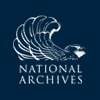Albert Gallatin to Thomas Jefferson, [9 October 1805]
From Albert Gallatin
[9 Oct. 1805]
Observations on foreign gold
Congress omitted last year to renew the temporary laws by which, so much of the general act respecting foreign coins, as declares that no foreign gold or silver coin (spanish dollars excepted) shall be current after the mint shall have been in operation a certain time, had from time to time been suspended. It followed that foreign gold ceased on 1 May last to be a legal tender. At that time nine tenths of the circulating specie or of that in the vaults of the several Banks consisted of such gold. A letter was written to the Bank of the U.S. recommending the importation of dollars from Europe, and the coining, into American coins, the foreign gold in their possession. Their answer is enclosed, and it must be observed that the omission of Congress which was accidental has done as yet no injury; for as there was no other specie, every one by tacit consent has received & paid it as if it had been a legal tender.
The question which will arise on that subject is Ought Congress again make foreign gold a legal tender? and if so, should not something to be done on the subject of Spanish gold. To the first question I have no hesitation to answer in the affirmative. But the second is more difficult to solve. It is evident that through mistake we have by law rated Spanish gold coins above their value. English, & Portuguese coins are of the same standard with our own. French have been rated properly or rather a little too low
To continue to receive Spanish coins above their value is to persist in error.
To declare that they shall pass hereafter only at their real value, will throw a loss on the holders, and check the importation of that kind of specie which in the coarse of trade is most easily obtained & chiefly supplies us.
To reduce our standard to the Spanish, raising of course the English, Portuguese & French gold coins to what would become their real value might properly be considered as an alteration of our coins.
A.G.
RC (DLC); undated; endorsed by TJ as received 9 Oct. 1805 and “Coin” and so recorded in SJL. Enclosure not found, but see below.
general act: “An Act regulating foreign Coins, and for other purposes,” approved 9 Feb. 1793, made foreign gold and silver coins legal tender in the United States and fixed their rates of exchange. Their status as legal tender was to cease three years after gold and silver coinage commenced at the U.S. Mint. Enactment of this latter provision, however, was temporarily suspended by subsequent acts passed in 1798 and 1802 (, 1:300-1, 539; 2:173).
subject of Spanish gold: an undated extract of a letter to Gallatin from the Bank of the United States reported that assays conducted by Joseph Richardson of the U.S. Mint found “milled Spanish Doubloons” to be no more than 21 karats fine. At current exchange rates, recoining them at the Mint would amount to a loss of “about three and a half per cent,” including the cost of refining. The extract was enclosed in an 11 Oct. 1805 letter from Gallatin to Mint director Robert Patterson, asking “whether Mr. Richardson’s assays may be depended upon” and for an explanation of the discrepancy (, 11:617-18).

![University of Virginia Press [link will open in a new window] University of Virginia Press](/lib/media/rotunda-white-on-blue.png)
